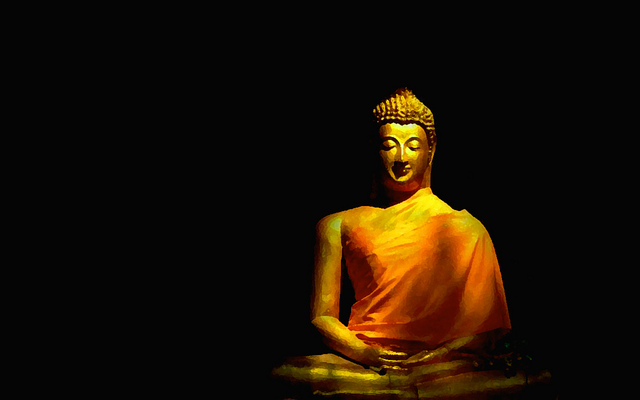In 2016, the Meditation Circle will be focusing on anapanasati, a core meditation practice in the Buddha’s teaching, focusing on the inhalation and exhalation of the breath and the 16 steps or instructions involved with deeply investigating the breath. This was one of the chief methods of meditation the Buddha likely practiced and taught throughout his 40 years of teaching. The 16 steps are divided into four sections or ‘tetrads.’
+ + +
If you wish to explore on your own the teachings on anapanasati, here are some suggestions:
- The Anapanasati Sutta: Mindfulness of Breathing. This is the sutta (Pali– ‘sutra’ in Sanskrit) in which the Buddha lays out his guidance on practicing this kind of meditation.
- Larry Rosenberg talks. Lay Buddhist teacher Larry Rosenberg (author of “Breath by Breath: The Liberating Practice of Insight Meditation“) says of his teaching approach: “The method I use most in teaching is anapanasati or mindfulness with breathing. Breath awareness supports us while we investigate the entire mind-body process. It helps calm the mind and gives us a graceful entry into a state of choiceless awareness–a place without agendas, where we are not for or against whatever turns up in the moment.” Here is a link to a page of audio files of his teachings at DharmaSeed.org. Click on the white bar that says ‘Select from Larry Rosenberg’s 308 Talks’ and find a host of them on anapanasati.
- Gil Fronsdal: Fronsdal is a leading lay Buddhist teacher and you can find his teachings on anapanasati practice at this link at AudioDharma.org.
+ + +
Come join the circle! Beginners are always welcome or those who are renewing a meditation practice. You don’t need to self-identify as a Buddhist to gain the benefits of a regular meditation practice. The Meditation Circle meets every Tuesday from 6 to 7 p.m. at the Unitarian Universalist Congregation building, 520 Kanawha Blvd W, in Charleston, W.Va. For directions, click here.




Pingback: Anapanasati, a breath meditation practice in the Buddha’s teaching | vivesur.wordpress.com